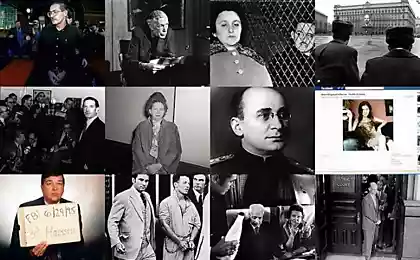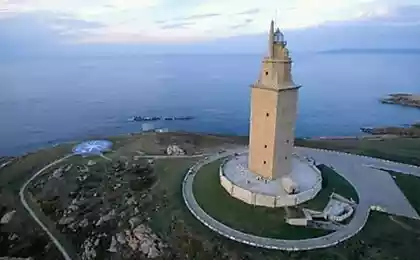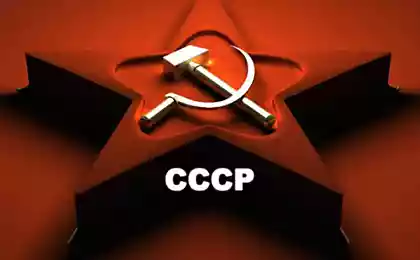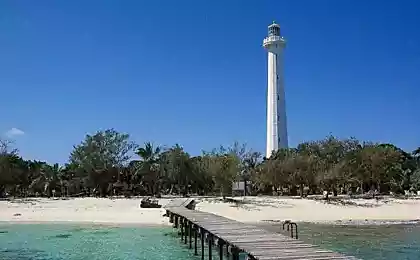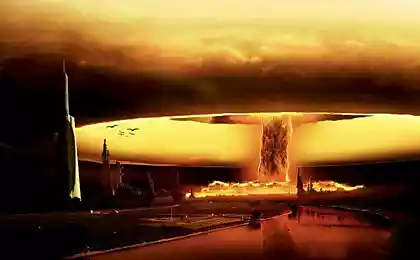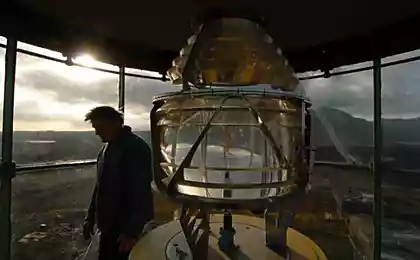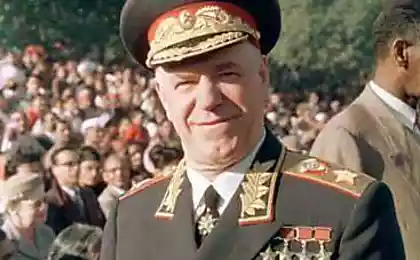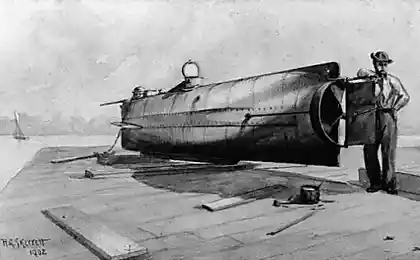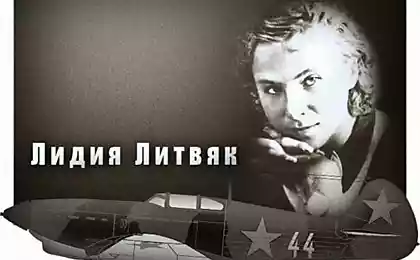983
"Lighthouse": The first Soviet nuclear disaster
In the fall of 1957, 29 years before the accident at the Chernobyl plant in the Urals city of Chelyabinsk a secret-40 was a first in the history of Soviet nuclear disaster. The explosion of the container in the storage of radioactive waste spewed a total activity of 20 million curies (for comparison, in Chernobyl - 50 million). The radioactive cloud covered an area of 20 thousand square kilometers. Part of its territory remains closed until now.
4 photos + text.
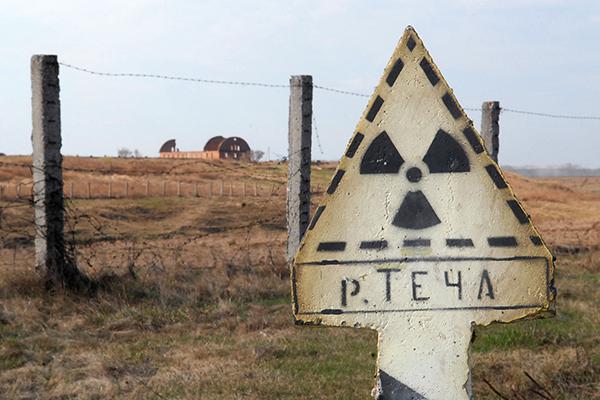
"Bomb" at hand
The first atomic weapons in the Soviet Union did in great haste: the Americans had dropped their bombs on Japan, and the Soviet Union at the cost of enormous efforts to catch up with rivals. 700 thousand scientists and dozens of factories across the country worked on the atomic project. Ural factories throughout the production cycle has been assigned a key role: it was placed the first commercial reactor and was to develop weapons-grade plutonium.
However, by 1957 "Nuclear Rush" was asleep: the USSR and created plutonium and uranium, and the hydrogen bomb. According to eyewitnesses, at this time at the plant in the "sorokovke" was quiet and confidence: the company every year worked all stable, production of plutonium was successful, thanks to the creative search for the scientists and engineers of the plant, the capacity of nuclear reactors able to raise five times at no additional cost . Many at the time thought that the most difficult period of the beginning of the atomic age - Commissioning of nuclear production - was left behind, and then it will be easier and easier.
"Characteristically, the various technical incidents, problems, and sometimes is not safe, place the main production - writes V. TOLSTIKOV in the book" The nuclear disaster in 1957 in the Urals "- here, of course, and waited for trouble. But in September 1957, the trouble came suddenly from the other side - with the storage of radioactive waste. It must be admitted that their storage and processing plant management has received less attention than the main production ».
Complex waste storage was a buried in the ground concrete "coffin" with cells for 20 containers of stainless steel, they were called "banks". They were cooled with water, which circulates between the walls of the container and concrete. All containers are equipped with a ventilation system as well as various sensors - heat, liquid level, and so on. D. However, the test then show that these devices are borrowed from the chemical industry, have failed almost immediately after the construction of the repository in 1953: no withstand harsh conditions. As a result, the liquid level in the cooling system no control over.
«Bank» №14 contains 256 cubic meters of high level liquid solutions, it is filled with waste production from March to April 1957. On the morning of September 29, a few hours before the explosion, the attendant storage technician noticed that the S-3 smokes. On the clubs of yellow smoke was reported superiors, and soon to study "cans" sent four technicians, equipped with the latest anti-radiation equipment lanterns and masks. Because of the dense smoke in the technical corridor vault, they almost did not see anything. As a result, the touch to check the wiring, including ventilation and went upstairs. They all remembered the "intense heat" in the repository.
According to the official version, the remainder without cooling "bank" fever, the solution evaporated, leaving about 80 tons of a mixture of dry nitrate acetate salts. Later, at the Academy of chemical protection establish that heating this mixture explodes better than black powder.
At 16 hours 22 minutes and it exploded. With 14 minutes "banks" demolished and thrown 25 meters concrete slab weighing 160 tonnes, has broken cover to two adjacent tanks. The buildings, located 200 meters from the point of explosion, smashed windows, partially collapsed walls, mangled iron gate. The power of the explosion was 50 tons of TNT. At the same time, no one was hurt. Clean witnesses of the accident began later Soviet atom.
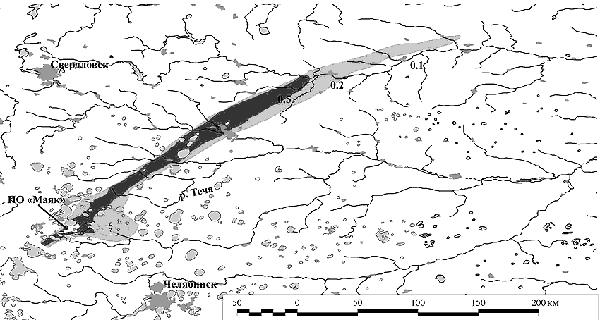
Lethal glow
On Sunday, September 29, 1957 in the "sorokovke" (closed city of Chelyabinsk-40, Chelyabinsk-65 later, now Ozersk) was warm and sunny, the stadium was a football match between the two secret plants. There was a steady southwest wind. This situation will be after the great importance. The spectators in the stands and would not pay attention to the booming sound from the plant, if after a few seconds there did not seem a cloud of dust and smoke, shaped like a torch. At dusk smoke occurs later there was light ... A few days later the newspaper "Izvestia" published an article about the unusual natural phenomenon in the Middle Urals, similar to the aurora.
This "lights", and in fact - a cloud of radioactive dust, driven thereby southwest wind at a speed of Asphalt roller - 30 kilometers per hour - moved through the industrial site under construction radiochemical plant, fire station, military camp and a camp for prisoners in the direction the city of Kamensk-Uralsky. The territory, which is then covered, called VURS (East Ural radioactive trace). It covers an area of 200 thousand square kilometers, and the map looks like on paper dropped a glass of jelly: teardrop spot converging to the northeast. The length of the "spot" reaches 105 kilometers and a maximum width of 8-10. In this area, there were 23 settlements.
In the first hours after the accident, people who find themselves far from the epicenter, witnessed another strange phenomenon: it snowed, rained down from the sky whitish flakes and littered the ground without melting, roof, stuck to the walls, settled on the face ... Radioactive snowfall lasted the whole day. Dawn arrived dosimetrists chemical plant, announced emergency evacuation of the personnel and soldiers-builders who worked on the construction of industrial facilities.
After the evacuation carried out sanitization, all dressed in clean clothes, witnesses recalled. But how to do it, did not really explained. Trying to wash the body with "invisible dirt", people rubbed themselves washcloths in overheated baths, driving deep into the skin of radioactive dust ... even more risk people who ate or smoked in the infected area. According to official data, as a result of the accident suffered more than a thousand soldiers, 63 of them soldiers received exposure from 10 to 50 X-rays.
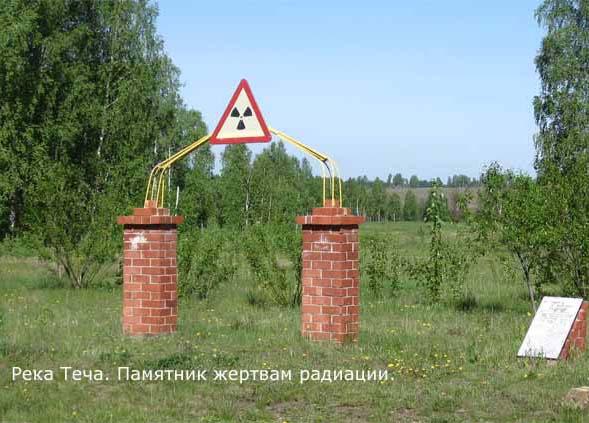
The feat plan
Meanwhile, the morning of September 30 the staff of the plant began his regular duties: production should not have to stop for a second. The second important task was to prevent the overheating of the waste remaining immured "banks." I had to drill in concrete 15-meter penetration to supply hoses with water - cooling. At the same time it began clearing the area where the radiation power of the "fonyaschego" debris ranged from 19,000 to several hundred micro-roentgen per second. And the experience of similar work or in the factory or in the entire Soviet Union was not.
"Then we came to what was going to happen. Workers soldiers did not go to the place of harvest. They stand and silent, the team does not perform, the more that their commanders and do not try to command, as expected, are afraid. Seeing this situation, we Lyzlov (engineer dosimetrist) passed by a group of soldiers, casually said: "Come on, guys," went to a dangerous area, stopped, lit a cigarette and began to talk quietly, ignoring the workers. It helped, they started to come to us, went to work. It is difficult for the first time to overcome the fear, and then it becomes easier ... We started to clean the road of dirt and debris, washed the walls of buildings, knocked plaster. Rubbish and topsoil were taken away in the pit-burial "- writes in his book" The plutonium for the atomic bomb, "Mikhail Gladyshev, former director of the plutonium plant at" sorokovke "who had personally taken part in the aftermath of the explosion.
On the same day it became clear that the consequences of the accident for the nearby settlements are very serious. However, the evacuation of the villages began only in 7-14 days. During this time, residents received an average dose - about 50 rem.
"Tow trucks did not stop at nothing - says an eyewitness, chairman of the society" Kyshtym-57 "Boris Bessonov - Come to the Bashkir village in trucks, we asked people how much they value their homes. Said gave cash amount. People were taken away immediately, forcing to throw things, cattle shot. People silently obeyed ».
The first 1,100 people moved from the countryside Berdyanish, Saltykov Galikaevo. Over the next year and a half we have moved nearly 10 thousand people. Popular rumor says the thousands of dead, born of many years of two-headed calves, but official data is not supported.
Minsredmash Commission before the end of 1957 to investigate the causes of the accident. Guilty recognized plant staff will not provide proper operation of waste storage. But actually punished only director of the company Michael Dem'yanovich. He was released from the duties of the director "for relief of labor discipline" and exiled to Siberia, the chief engineer at the company of the same profile.
Today, the economic use of returned more than 82 percent of the land area EURT - a total of 87 thousand hectares. The rest of the territory, located in the head of the "drops" (16, 6 thousand hectares), is reserved for the East Ural reserve, allowing to study the impact of radiation on plants, animals and soil. Studies show that nature, albeit slowly, but cured: for 50 years the number of nuclide "dirt" in the ground has decreased by half, and in plants - in 8 times. However, to fully secure these territories will be no earlier than one hundred years.
source

Source:
4 photos + text.

"Bomb" at hand
The first atomic weapons in the Soviet Union did in great haste: the Americans had dropped their bombs on Japan, and the Soviet Union at the cost of enormous efforts to catch up with rivals. 700 thousand scientists and dozens of factories across the country worked on the atomic project. Ural factories throughout the production cycle has been assigned a key role: it was placed the first commercial reactor and was to develop weapons-grade plutonium.
However, by 1957 "Nuclear Rush" was asleep: the USSR and created plutonium and uranium, and the hydrogen bomb. According to eyewitnesses, at this time at the plant in the "sorokovke" was quiet and confidence: the company every year worked all stable, production of plutonium was successful, thanks to the creative search for the scientists and engineers of the plant, the capacity of nuclear reactors able to raise five times at no additional cost . Many at the time thought that the most difficult period of the beginning of the atomic age - Commissioning of nuclear production - was left behind, and then it will be easier and easier.
"Characteristically, the various technical incidents, problems, and sometimes is not safe, place the main production - writes V. TOLSTIKOV in the book" The nuclear disaster in 1957 in the Urals "- here, of course, and waited for trouble. But in September 1957, the trouble came suddenly from the other side - with the storage of radioactive waste. It must be admitted that their storage and processing plant management has received less attention than the main production ».
Complex waste storage was a buried in the ground concrete "coffin" with cells for 20 containers of stainless steel, they were called "banks". They were cooled with water, which circulates between the walls of the container and concrete. All containers are equipped with a ventilation system as well as various sensors - heat, liquid level, and so on. D. However, the test then show that these devices are borrowed from the chemical industry, have failed almost immediately after the construction of the repository in 1953: no withstand harsh conditions. As a result, the liquid level in the cooling system no control over.
«Bank» №14 contains 256 cubic meters of high level liquid solutions, it is filled with waste production from March to April 1957. On the morning of September 29, a few hours before the explosion, the attendant storage technician noticed that the S-3 smokes. On the clubs of yellow smoke was reported superiors, and soon to study "cans" sent four technicians, equipped with the latest anti-radiation equipment lanterns and masks. Because of the dense smoke in the technical corridor vault, they almost did not see anything. As a result, the touch to check the wiring, including ventilation and went upstairs. They all remembered the "intense heat" in the repository.
According to the official version, the remainder without cooling "bank" fever, the solution evaporated, leaving about 80 tons of a mixture of dry nitrate acetate salts. Later, at the Academy of chemical protection establish that heating this mixture explodes better than black powder.
At 16 hours 22 minutes and it exploded. With 14 minutes "banks" demolished and thrown 25 meters concrete slab weighing 160 tonnes, has broken cover to two adjacent tanks. The buildings, located 200 meters from the point of explosion, smashed windows, partially collapsed walls, mangled iron gate. The power of the explosion was 50 tons of TNT. At the same time, no one was hurt. Clean witnesses of the accident began later Soviet atom.

Lethal glow
On Sunday, September 29, 1957 in the "sorokovke" (closed city of Chelyabinsk-40, Chelyabinsk-65 later, now Ozersk) was warm and sunny, the stadium was a football match between the two secret plants. There was a steady southwest wind. This situation will be after the great importance. The spectators in the stands and would not pay attention to the booming sound from the plant, if after a few seconds there did not seem a cloud of dust and smoke, shaped like a torch. At dusk smoke occurs later there was light ... A few days later the newspaper "Izvestia" published an article about the unusual natural phenomenon in the Middle Urals, similar to the aurora.
This "lights", and in fact - a cloud of radioactive dust, driven thereby southwest wind at a speed of Asphalt roller - 30 kilometers per hour - moved through the industrial site under construction radiochemical plant, fire station, military camp and a camp for prisoners in the direction the city of Kamensk-Uralsky. The territory, which is then covered, called VURS (East Ural radioactive trace). It covers an area of 200 thousand square kilometers, and the map looks like on paper dropped a glass of jelly: teardrop spot converging to the northeast. The length of the "spot" reaches 105 kilometers and a maximum width of 8-10. In this area, there were 23 settlements.
In the first hours after the accident, people who find themselves far from the epicenter, witnessed another strange phenomenon: it snowed, rained down from the sky whitish flakes and littered the ground without melting, roof, stuck to the walls, settled on the face ... Radioactive snowfall lasted the whole day. Dawn arrived dosimetrists chemical plant, announced emergency evacuation of the personnel and soldiers-builders who worked on the construction of industrial facilities.
After the evacuation carried out sanitization, all dressed in clean clothes, witnesses recalled. But how to do it, did not really explained. Trying to wash the body with "invisible dirt", people rubbed themselves washcloths in overheated baths, driving deep into the skin of radioactive dust ... even more risk people who ate or smoked in the infected area. According to official data, as a result of the accident suffered more than a thousand soldiers, 63 of them soldiers received exposure from 10 to 50 X-rays.

The feat plan
Meanwhile, the morning of September 30 the staff of the plant began his regular duties: production should not have to stop for a second. The second important task was to prevent the overheating of the waste remaining immured "banks." I had to drill in concrete 15-meter penetration to supply hoses with water - cooling. At the same time it began clearing the area where the radiation power of the "fonyaschego" debris ranged from 19,000 to several hundred micro-roentgen per second. And the experience of similar work or in the factory or in the entire Soviet Union was not.
"Then we came to what was going to happen. Workers soldiers did not go to the place of harvest. They stand and silent, the team does not perform, the more that their commanders and do not try to command, as expected, are afraid. Seeing this situation, we Lyzlov (engineer dosimetrist) passed by a group of soldiers, casually said: "Come on, guys," went to a dangerous area, stopped, lit a cigarette and began to talk quietly, ignoring the workers. It helped, they started to come to us, went to work. It is difficult for the first time to overcome the fear, and then it becomes easier ... We started to clean the road of dirt and debris, washed the walls of buildings, knocked plaster. Rubbish and topsoil were taken away in the pit-burial "- writes in his book" The plutonium for the atomic bomb, "Mikhail Gladyshev, former director of the plutonium plant at" sorokovke "who had personally taken part in the aftermath of the explosion.
On the same day it became clear that the consequences of the accident for the nearby settlements are very serious. However, the evacuation of the villages began only in 7-14 days. During this time, residents received an average dose - about 50 rem.
"Tow trucks did not stop at nothing - says an eyewitness, chairman of the society" Kyshtym-57 "Boris Bessonov - Come to the Bashkir village in trucks, we asked people how much they value their homes. Said gave cash amount. People were taken away immediately, forcing to throw things, cattle shot. People silently obeyed ».
The first 1,100 people moved from the countryside Berdyanish, Saltykov Galikaevo. Over the next year and a half we have moved nearly 10 thousand people. Popular rumor says the thousands of dead, born of many years of two-headed calves, but official data is not supported.
Minsredmash Commission before the end of 1957 to investigate the causes of the accident. Guilty recognized plant staff will not provide proper operation of waste storage. But actually punished only director of the company Michael Dem'yanovich. He was released from the duties of the director "for relief of labor discipline" and exiled to Siberia, the chief engineer at the company of the same profile.
Today, the economic use of returned more than 82 percent of the land area EURT - a total of 87 thousand hectares. The rest of the territory, located in the head of the "drops" (16, 6 thousand hectares), is reserved for the East Ural reserve, allowing to study the impact of radiation on plants, animals and soil. Studies show that nature, albeit slowly, but cured: for 50 years the number of nuclide "dirt" in the ground has decreased by half, and in plants - in 8 times. However, to fully secure these territories will be no earlier than one hundred years.
source

Source:



